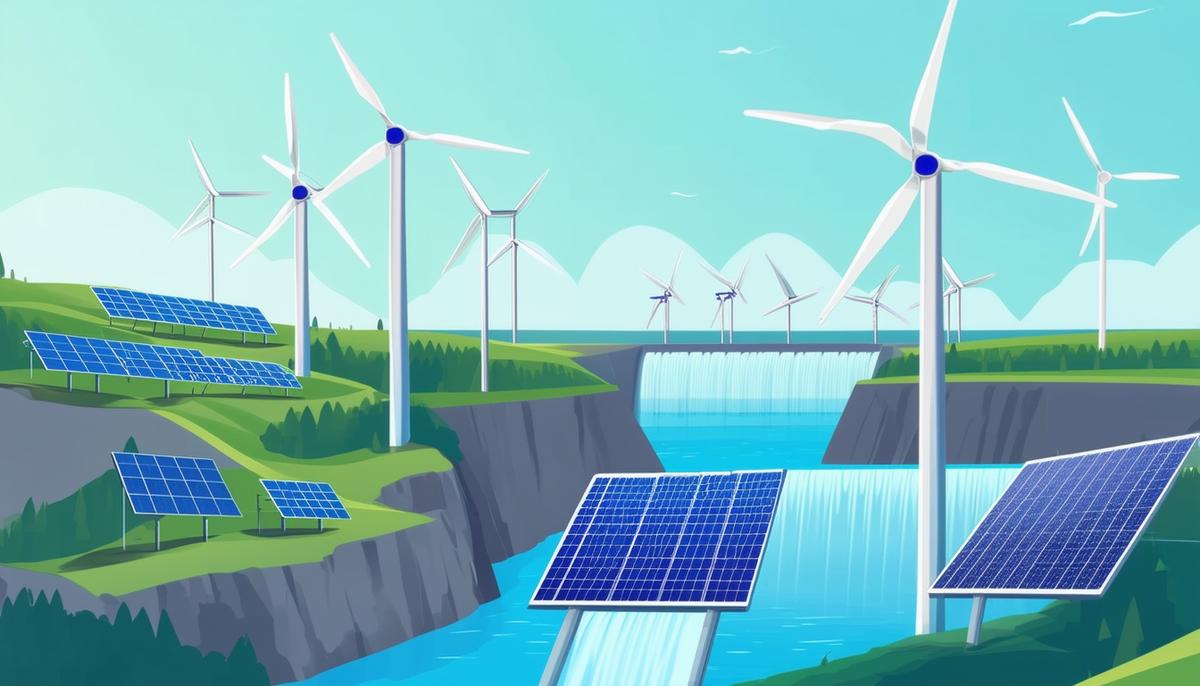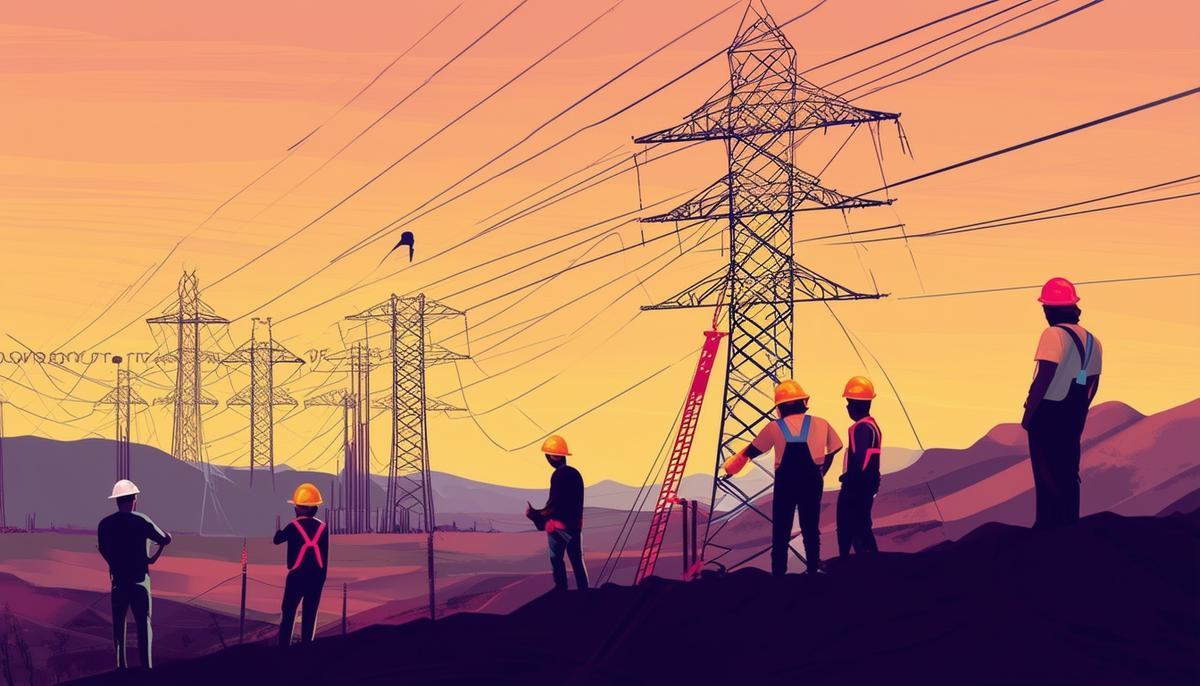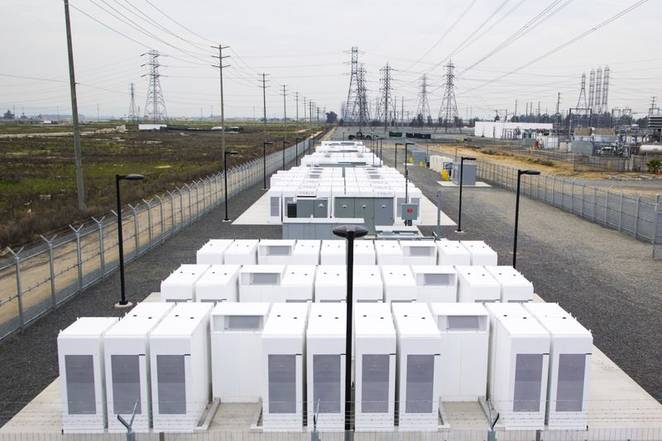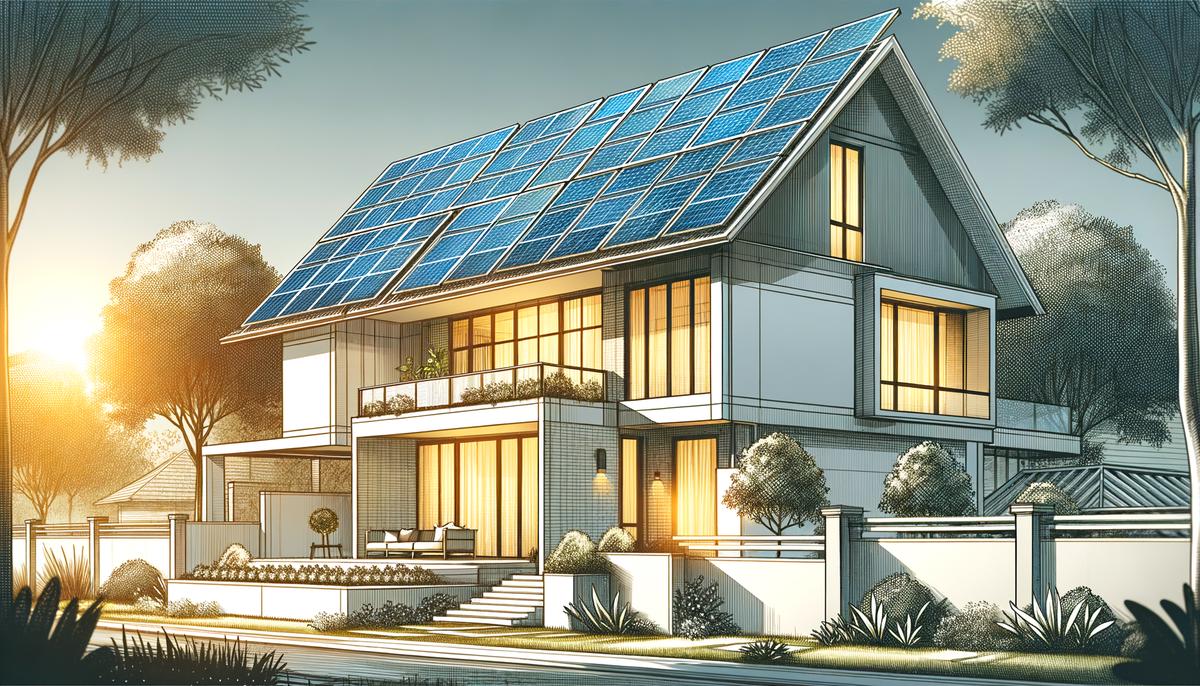Current State of Renewable Energy
In 2021, more than 37% of California's electricity came from Renewables Portfolio Standard (RPS)-eligible sources like wind and solar, a 2.7% increase from the previous year. When factoring in other zero-carbon energy sources like large hydroelectric and nuclear power, nearly 59% of California's retail electricity sales came from nonfossil fuel sources.
Despite a significant drought impacting hydroelectric generation, California's renewable energy machine kept humming, thanks to robust contributions from other clean sources. The state aims to generate 100% of its electricity from carbon-free resources by 2045, with intermediate targets of 90% clean energy by 2035 and 95% by 2040.
Battery storage capacity has exploded, jumping from 250 megawatts (MW) in 2019 to over 6,600 MW in 2023. This plays a crucial role, especially during peak demand times when solar power drops off after sunset. With energy storage, wind and solar energy get captured and discharged precisely when the grid needs it most.
The rapid growth in renewables has led to some growing pains. CAISO, the California grid operator, has been increasingly curtailing wind and solar power to balance supply and demand. Curtailment, mainly because of congestion, spiked by 63% from 2021 to 2022.
To alleviate congestion, CAISO is expanding transmission capacity and has rolled out the Western Energy Imbalance Market (WEIM), a real-time energy market minimizing curtailments by trading energy outside of CAISO. Battery storage is a major player in this balancing act, capturing surplus renewable energy and releasing it during peak demand times, significantly reducing curtailments.
California is pushing forward aggressively, investing in storage and transmission to mitigate challenges. It's not just about adding more solar panels or wind turbines; it's about ensuring the energy we produce gets where it's needed, when it's needed. This holistic approach sets an example for other states and countries.

Challenges and Opportunities in Grid Integration
The surge in renewable energy projects has led to a backlog at CAISO, making it difficult for developers to connect new projects to the grid. This backlog is partly due to the amount of renewable energy proposals flooding in, driven by federal tax incentives, state mandates, and consumer demand.
To address this, CAISO has a $7.3 billion portfolio of 45 transmission projects designed to reduce congestion and ensure renewable energy can flow efficiently. CAISO is also revamping its grid-connection process, prioritizing the most viable projects to optimize the use of limited transmission capacity and engineering resources.
Local opposition to large-scale solar installations poses another roadblock, with communities expressing concerns about the impact on their local environment and lifestyle. Balancing these concerns with the need for more renewable energy infrastructure is essential. Transparent communication and genuine community engagement are crucial to garnering public support.
The Federal Energy Regulatory Commission (FERC) has stepped in to accelerate the grid-connection process nationwide, requiring developers to have more "skin in the game" and penalizing transmission providers who miss study deadlines.
Solutions like the Western Energy Imbalance Market (WEIM) will play a key role, allowing energy to be traded in real-time across the western U.S., helping to balance supply and demand more effectively and reducing curtailments.
California's energy journey involves technological advancements, regulatory reforms, and community relations. By focusing on strategic transmission upgrades, improving the grid connection process, and addressing local concerns, California can continue to lead the charge toward a 100% renewable energy future.

Advancements in Energy Storage
The rapid expansion of battery storage capacity is one of the most exciting advancements in California's renewable energy landscape, growing from 250 MW in 2019 to over 6,600 MW in 2023. This remarkable growth underscores the state's commitment to not only harnessing renewable energy sources but also ensuring that this energy can be effectively utilized when it's most needed.
Battery storage systems are essential for balancing supply and demand within the power grid, especially during peak usage times when solar power generation doesn't align with periods of high energy demand. By storing excess solar energy generated during the day, battery systems can discharge this energy during peak demand hours, bridging the gap and providing a steady, reliable power supply.
The California Energy Commission's (CEC) newly released dashboard highlights the state's progress in energy storage installations, with over 122,000 residential, commercial, and utility-scale battery projects online. An additional 1,900 MW of energy storage projects is expected to be operational by the end of 2023, bringing the total to over 8,500 MW.
Looking ahead to 2045, California aims to have a staggering 52,000 MW of energy storage capacity, cementing its status as a leader in the transition to a sustainable, clean energy future. This strategy involves the integration of energy storage with large-scale renewable energy projects, capturing surplus energy from solar farms and wind parks for later use.
The impact of energy storage extends beyond balancing the grid. It also plays a role in reducing curtailments, situations where excess generation capacity is wasted because the grid can't accommodate it. With more storage options available, energy that would otherwise be curtailed can be stored and used later, enhancing the overall efficiency and reliability of the grid.
The development of residential and commercial battery storage systems empowers consumers to become active participants in the energy ecosystem, reducing their reliance on the grid and enhancing resilience during power outages.
California's relentless push toward expanding its battery storage capacity is a testament to its innovative spirit and dedication to combating climate change. By leveraging advanced energy storage technologies, the state is addressing the challenges of integrating renewable energy and laying the groundwork for a more sustainable and resilient future.

Economic Impact and Policy Reforms
As California ramps up its investment in renewable infrastructure, retail electricity prices have nearly doubled over the past decade, sparking a conversation about equity and affordability. Factors contributing to the spike include investments in wildfire mitigation, grid fortifications, and upgrades to transmission and distribution networks.
The California Public Utilities Commission (CPUC) has implemented policy reforms like income-graduated fixed charges for residential utility customers and net metering reforms to address cross-subsidization issues. These aim to alleviate financial strain on low-income households and balance the financial load more equitably.
Financial support mechanisms are essential, including:
- Incentives for energy storage projects and manufacturing facilities
- Federal and state tax incentives
These incentives reduce upfront costs and make clean energy projects more financially viable and attractive for businesses.
The economic impact also includes broader market opportunities, with the clean energy sector set to create thousands of jobs in manufacturing, installation, maintenance, and research and development.
Policymakers must navigate the balance between fostering innovation and ensuring affordability, continuously fine-tuning measures to address evolving market dynamics and stakeholder needs. The CPUC's efforts to integrate renewable energy projects while managing costs are a testament to this commitment.
By addressing the economic impacts thoughtfully, California can maintain its leadership in renewable energy while ensuring that the benefits of a clean energy future are shared by all its residents. This balanced approach paves the way for a resilient, fair, and sustainable energy system.

References
- California Energy Commission. Total System Electric Generation. 2022.
- California Independent System Operator (CAISO). 2022 Annual Report on Market Issues and Performance. 2023.
- California Public Utilities Commission (CPUC). Proceedings on Net Metering Reforms. 2023.
- U.S. Department of Energy. Energy Employment by State. 2022.
Leave a Reply